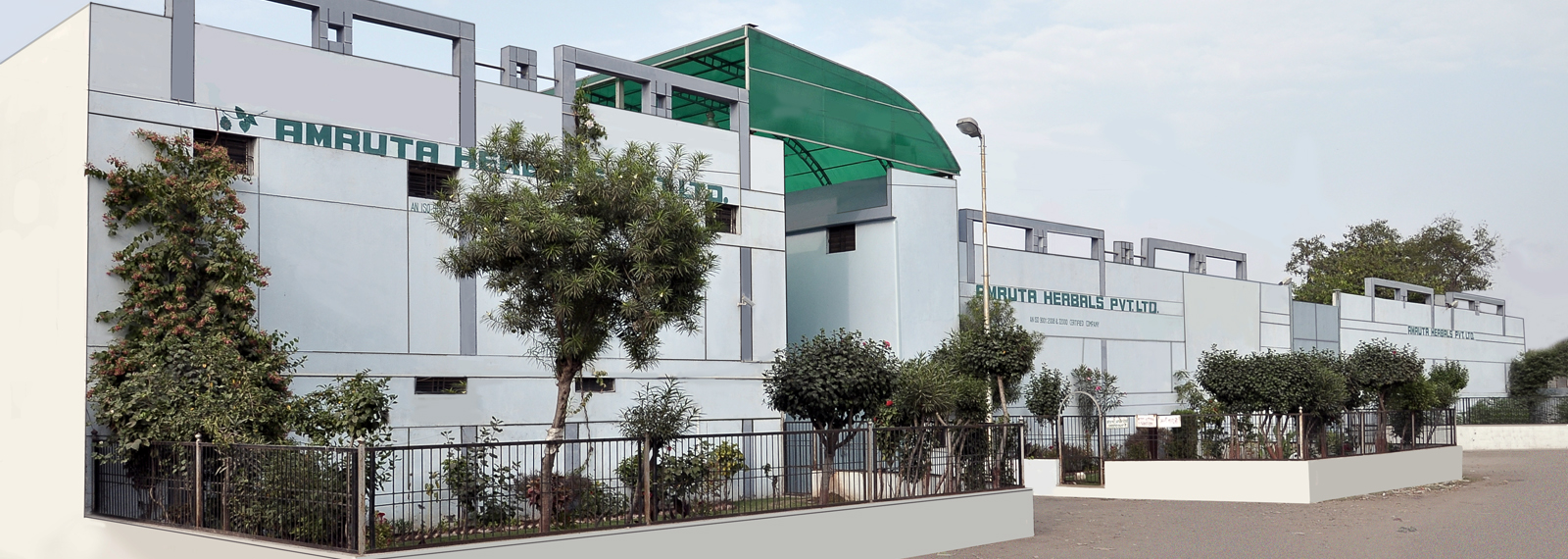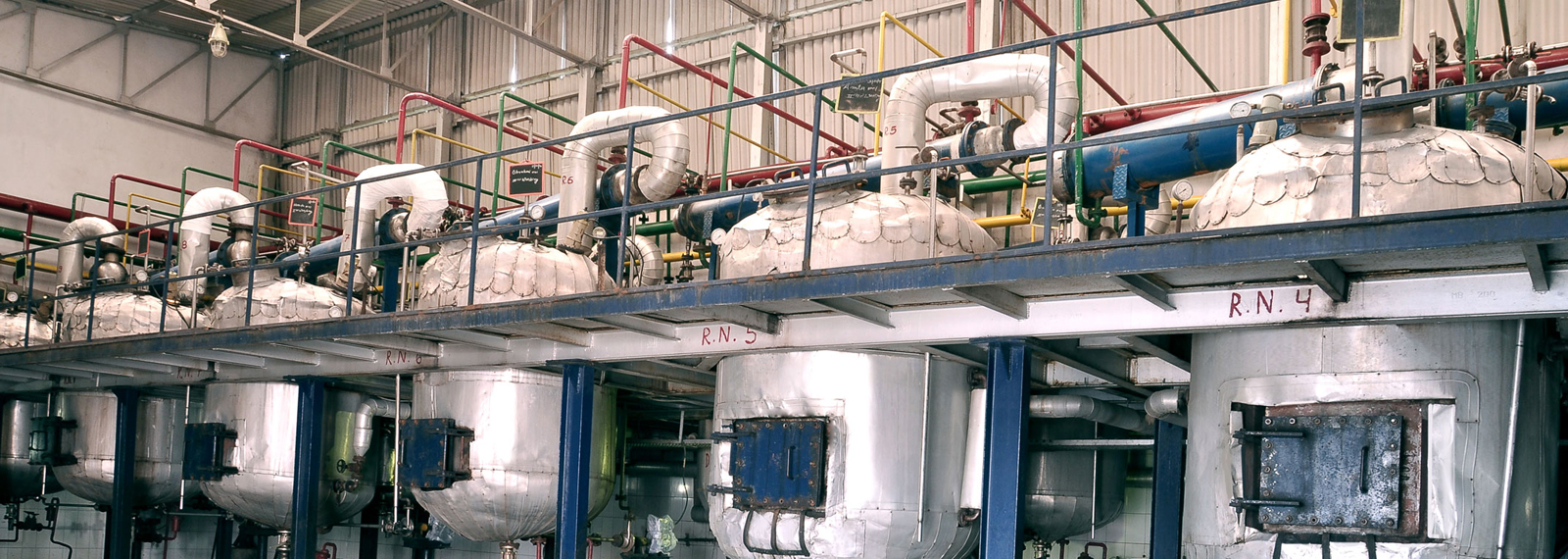Curcuma longa
Curcuma longa

| Sanskrit: | Haridra |
| English: | Turmeric |
| Hindi: | Haldi |
| Marathi: | Halad |
| Botanical name: | Rhizoma Curcumae Longae |
| Family : | Zingiberaceae |
| Syn: | Curcuma domestica Valeton., C. rotunda L., C. xanthorrhiza Naves, Amomum curcuma Jacq. |
| Plant Part Used: | dried rhizome |
Perennial herb up to 1.0 m in height; stout, fleshy, main rhizome nearly ovoid (about 3 cm in diameter and 4 cm long). Lateral rhizome, slightly bent (1cm _ 2-6cm), flesh orange in colour; large leaves lanceolate, uniformly green, up to 50cm long and 7-25cm wide; apex acute and caudate with tapering base, petiole and sheath sparsely to densely pubescent. Spike, apical, cylindrical, 10- 15cm long and 5-7 cm in diameter. Bract white or white with light green upper half, 5-6 cm long, each subtending flowers, bracteoles up to 3.5 cm long. Pale yellow flowers about 5cm long; calyx tubular, unilaterally split, unequally toothed; corolla white, tube funnel shaped, limb 3-lobed. Stamens lateral, petaloid, widely elliptical, longer than the anther; filament united to anther about the middle of the pollen sac, spurred at base. Ovary trilocular; style glabrous. Capsule ellipsoid. Rhizomes orange within
Rasa: tikta
Guna: Ruksha laghu
Rasa: Tikta
Veerya: Ushna
Vipak: Katu
Dosha: Vatakaphahara
Karma: Shothaghna,Twakdoshahara,Vranashodhan-Ropan,Kantivardhak Deepan,Kandughna,Grahi
Pale yellow to orange-yellow volatile oil (6%) composed of a number of monoterpenes and sesquiterpenes, including zingiberene, curcumene, a- and _- turmerone among others. The colouring principles (5%) are curcuminoids, 50- 60% of which are a mixture of curcumin, monodesmethoxycurcumin and bisdesmethoxycurcumin. Representative structures of curcuminoids are presented below .

Anti inflammatory,In flatulence , dyspepsia &peptic ulcer, Experimental pharmacology
Uses supported by clinical data
The principal use of Rhizoma Curcumae Longae is for the treatment of acid, flatulent, or atonic dyspepsia
The anti-inflammatory activity of Rhizoma Curcumae Longae has been demonstrated in animal models Intraperitoneal administration of the drug in rats effectively reduced both acute and chronic inflammation in carrageenininduced paw oedema, the granuloma pouch test, and the cotton pellet granuloma test The effectiveness of the drug in rats was reported to be similar to that of hydrocortisone acetate or indometacin in experimentally induced inflammation Oral administration of turmeric juice or powder did not produce an anti-inflammatory effect; only intraperitoneal injection was effective The volatile oil has exhibited anti-inflammatory activity in rats against adjuvant-induced arthritis, carrageenin-induced paw oedema, and hyaluronidase-induced inflammation The anti-inflammatory activity appears to be mediated through the inhibition of the enzymes trypsin and hyaluronidase Curcumin and its derivatives are the active anti-inflammatory constituents of the drug). After intraperitoneal administration, curcumin and sodium curcuminate exhibited strong anti-inflammatory activity in the carrageenin-induced oedema test in rats and mice Curcumin was also found to be effective after oral administration in the acute carrageenin-induced oedema test in mice and rats The anti-inflammatory activity of curcumin may be due to its ability to scavenge oxygen radicals, which have been implicated in the inflammation process Furthermore, intraperitoneal injection of a polysaccharide fraction, isolated from the drug, increased phagocytosis capacity in mice in the clearance of colloidal carbon test (Ref: WHO monographs on selected medicinal plants) Activity against peptic ulcer and dyspepsia Oral administration to rabbits of water or methanol extracts of the drug signifi- cantly decreased gastric secretion and increased the mucin contents of gastric juice. Intragastric administration of an ethanol extract of the drug to rats effectively inhibited gastric secretion and protected the gastroduodenal mucosa against injuries caused by pyloric ligation, hypothermic-restraint stress, indometacin, reserpine, and mercaptamine administration, and cytodestructive agents such as 80% methanol, 0.6mol/l hydrochloric acid, 0.2mol/l sodium hydroxide and 25% sodium chloride .The drug stimulated the production of gastric wall mucus, and it restored non-protein sulfides in rats Curcumin, one of the anti-inflammatory constituents of the drug, has been shown to prevent and ameliorate experimentally induced gastric lesions in animal models by stimulation of mucin production .However, there are conflicting reports regarding the protective action of curcumin against histamine-induced gastric ulceration in guinea-pigs .Moreover, both intraperitoneal and oral administration of curcumin (100 mg/kg) have been reported to induce gastric ulceration in rats . Non-specific inhibition of smooth muscle contractions in isolated guinea-pig ileum by sodium curcuminate has been reported . The effect of curcumin on intestinal gas formation has been demonstrated in vitro and in vivo. Addition of curcumin to Clostridium perfringens of intestinal origin in vitro and to a chickpea flour diet fed to rats led to a gradual reduction in gas formation . Both the essential oil and sodium curcuminate increase bile secretion after intravenous administration to dogs . In addition, gall-bladder muscles were stimulated .
Oral administration of the drug to 116 patients with acid dyspepsia, flatulent dyspepsia, or atonic dyspepsia in a randomized, double-blind study resulted in a statistically significant response in the patients receiving the drug . The patients received 500 mg of the powdered drug four times daily for 7 days . Two other clinical trials which measured the effect of the drug on peptic ulcers showed that oral administration of the drug promoted ulcer healing and decreased the abdominal pain involved . Two clinical studies have shown that curcumin is an effective antiinflammatory drug . A short-term (2 weeks) double-blind, crossover study of 18 patients with rheumatoid arthritis showed that patients receiving either curcumin (1200 mg/day) or phenylbutazone (30 mg/day) had significant improvement in morning stiffness, walking time and joint swelling . In the second study, the effectiveness of curcumin and phenylbutazone on postoperative inflammation was investigated in a double-blind study . Both drugs produced a better anti-inflammatory response than a placebo , but the Rhizoma Curcumae Longae 121 degree of inflammation in the patients varied greatly and was not evenly distributed among the three groups.
Obstruction of the biliary tract. In cases of gallstones, use only after consultation with a physician (26). Hypersensitivity to the drug .
Uses described in pharmacopoeias and in traditional systems of medicine
Treatment of peptic ulcers, and pain and inflammation due to rheumatoid arthritis (2, 11, 14, 29, 30) and of amenorrhoea, dysmenorrhoea, diarrhoea, epilepsy, pain, and skin diseases (2, 3, 16).
Uses described in folk medicine, not supported by experimental or clinical data
The treatment of asthma, boils, bruises, coughs, dizziness, epilepsy, haemorrhages, insect bites, jaundice, ringworm, urinary calculi, and slow lactation (3, 7, 8-10, 14).
No information available.
Carcinogenesis, mutagenesis, impairment of fertility
Rhizoma Curcumae Longae is not mutagenic in vitro (54-56).
Pregnancy: teratogenic effects
Orally administered Rhizoma Curcumae Longae was not tetratogenic in mice or rats (34, 57, 58).
Pregnancy: non-teratogenic effects
The safety of Rhizoma Curcumae Longae during pregnancy has not been established. As a precautionary measure the drug should not be used during pregnancy except on medical advice (59).
Nursing mothers
Excretion of the drug into breast milk and its effects on the newborn have not been established. Until such data are available, the drug should not be used during lactation except on medical advice.
Paediatric use
The safety and effectiveness of the drug in children has not been established.
Other precautions
No information on drug interactions or drug and laboratory test interactions was found. Adverse reactions Allergic dermatitis has been reported (60). Reactions to patch testing occurred most commonly in persons who were regularly exposed to the substance or who already had dermatitis of the finger tips. Persons who were not previously exposed to the drug had few allergic reactions (60). WHO monographs on selected medicinal plants
Posology
Crude plant material, 3-9g daily (5, 6); powdered plant material, 1.5-3.0 g daily (9, 19); oral infusion, 0.5-1g three times per day; tincture (1 : 10) 0.5-1ml three times per day.
Powdered crude plant material, rhizomes (1, 2), and corresponding preparations (25). Store in a dry environment protected from light. Air dry the crude drug every 2-3 months





